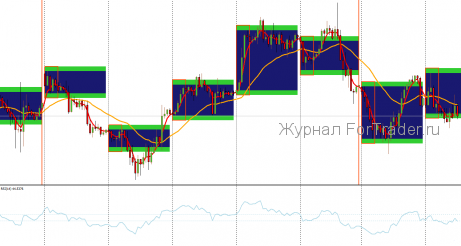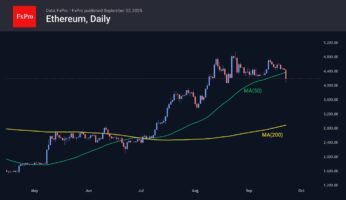Every novice trader has heard alarming stories about trading strategies based on the Martingale principle that can quickly generate profits but just as swiftly wipe out a deposit—sometimes within a few hours. Moreover, many websites are flooded with forex robots built on the Martingale principle, averaging, grid orders, and other “survival” tactics.
However, as traders gain experience and better understand Forex market mechanisms, many begin to notice not only the high risks of such expert advisors but also their increased profitability. How can one resist the temptation to try? It’s quite simple. It turns out that with these high-risk trading advisors, you can earn well and, most importantly, consistently on Forex. To do this, just follow eight straightforward rules.
Contents
- Rule #1. Use Cent Accounts for Trading
- Rule #2. Use the Maximum Leverage Available
- Rule #3. Read and Follow the Expert Advisor’s Usage Recommendations
- Rule #4. Test Risky Advisors in a Strategy Tester
- Rule #5. Withdraw Your Profits Periodically
- Rule #6. Understand the Robot’s Trading Principle
- Rule #7. Trade on Swap-Free Accounts
- Rule #8. Use VPS Server Services
Rule #1. Use Cent Accounts for Trading
The vast majority of such advisors require a substantial balance on the trading account. This is natural—the robot opens many trades, constantly increases lot sizes, and “waits out” current losses. This is exactly why a cent account is needed: with a $100 deposit, your balance will show 10,000 units (100 dollars x 100 cents), allowing you to safely test the advisor without significant risk or psychological stress.
If $100 is a small amount for you, use a larger deposit that you can afford to lose.
Rule #2. Use the Maximum Leverage Available
As you may know, increasing leverage does not necessarily increase risk, so take advantage of this opportunity. For comfortable trading with a “risky” advisor, a large leverage is essential—the optimal range is 1:100 to 1:500. Why?
If many losing trades are open, a small leverage will quickly lead to Margin Call and Stop Out, whereas a higher leverage gives the losing pyramid of orders a better chance to return to profit.
Rule #3. Read and Follow the Expert Advisor’s Usage Recommendations
In Forex, it’s hard to invent something radically new: all trading robots, paid or free, are based on common principles. Each advisor has been tested by traders thousands of times. Patterns have been identified, and often settings are provided for each currency pair and timeframe.
Don’t be lazy—read the developers’ recommendations and advice from traders who have already tried the “risky” robot. Don’t repeat others’ mistakes. If it says the optimal trading amount is $200, don’t run it on a $30 deposit. Use others’ experience; there’s nothing shameful about it.
Rule #4. Test Risky Advisors in a Strategy Tester
However, don’t blindly trust someone else’s statement: any forex advisor, especially one based on Martingale, must be tested personally. This will also help you better understand how it behaves in different market conditions. The MetaTrader 4 built-in strategy tester is perfect for this.
Be sure to set the advisor’s parameters exactly as you will use them on a real account, including the same deposit size. Testing will help determine the possible drawdown and whether your deposit can withstand it.
Rule #5. Withdraw Your Profits Periodically
High-risk trading advisors are called dangerous for a reason. Yes, they can bring significant profits, often many times higher than other advisors. But the robot cannot think—it doesn’t care if the Fed raises interest rates or labor market data is released. Sooner or later, the robot will simply fail to “wait out” a current loss, and the deposit will be lost.
Don’t fear this—it’s simply inevitable—but keep it in mind constantly. Set a profit withdrawal schedule—weekly, monthly—and stick to it. The ideal scenario is when the initial deposit is already withdrawn, and the robot continues trading only with earned funds.
Rule #6. Understand the Robot’s Trading Principle
Simple testing in a strategy tester is not enough to understand how the advisor works. Install your expert on a demo account and observe its trading for a significant period. Understand how it opens orders, how long positions are held, and when the robot is effective or not.
Is it time-consuming? Don’t rush—money doesn’t like haste, and Forex profits won’t disappear. This approach will save you a lot of money spent on “testing” the advisor on a real deposit.
Rule #7. Trade on Swap-Free Accounts
If testing shows that the advisor can hold positions for a long time, it makes sense to use it only on swap-free accounts. Otherwise, you will incur unnecessary losses just by carrying positions overnight.
Rule #8. Use VPS Server Services
Murphy’s law applies here. Even the most stable internet connection can drop at the worst moment, or the power might go out. Few can afford to keep their computer running all the time, and advisors work only when the trading terminal is running.
To avoid losing profits or, worse, suffering significant losses due to such issues, it’s best to use VPS server services.
Of course, it’s impossible to guarantee profitable trading for all advisors with just general rules, as each has its own features. Nevertheless, following these eight rules will help you earn profits even when trading with high-risk Forex expert advisors.













